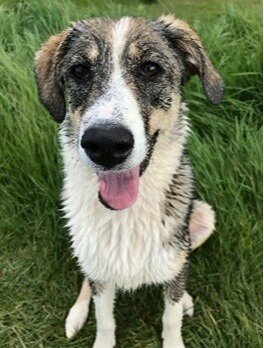Top Tips For Loose Lead Walking
Is your dog’s pulling getting you down?
It is actually quite easy to solve.
Dogs pull on the lead for lots of reasons:
1. You don’t walk fast enough
2. Smells! Lots to sniff, and you don't walk fast enough 😊
3. Excitement!
4. Pulling is worth it because it works, and they get to sniff and get to the park much quicker.
5. You don't walk fast enough.
Walking a dog should be a positive experience. Being dragged down the street is not fun and can even cause harm to the dog’s delicate neck area. Take a look at the image below.
Excitement directly causes pulling. Achieving a loose lead is difficult with an over-excited dog. To accomplish that wonderful loose lead, you need to first work on how your dog is feeling. Are they over-excited? If so, they are much more likely to pull and react. So, it’s the excitement you need to work on.
Calmness is king! If you have the same walk every day, this may create excitement and a tendency to pull. If the dog is bored, has little mental enrichment in their life this may also have an impact.
· Change your routine – consider walking different routes, so the dogs don't anticipate what will happen.
· Enrichment – use simple, fun games at home to provide mental stimulation. Contact me at info@bark-ology.co.uk for a free fact sheet on brain games.
So how do you stop them pulling?
1. Be consistent.
2. Commit to the process, work on lead skills as the number one priority, and you will succeed.
3. be clear about your criteria
I would suggest thinking about loose lead as two slightly different 'modes.'
Mode 1
Traditional Heelwork - the dog is walking politely by your side.
Mode 2
Leisure mode – When your dog needs to be on a lead, but it is safe for them to have more freedom. In this mode, they can stop and sniff and explore. BUT they can’t pull!
Sounds good? Then read on:
Mode 1
Heelwork. The reward at your side.
Decide if your dog is going to walk on the left or right side.
Get a handful of tasty treats and start rewarding just behind your knee. Don't worry if the dog isn't perfectly aligned; offer the reward behind your knee, at first every step, then every other step, and so on.
Practice little and often, add duration, add distractions, build gradually from training in your garden to a quiet street. Add your verbal cue mine is 'close,' but yours can be anything you choose.
Mode 2 – leisure mode.
You have one rule. If the lead is tight, you STOP WALKING if the lead is loose, the walk continues. No treats, no fuss, no lead jerks, no pulling.
Leisure mode uses life rewards; instead of food, the dog's reward is getting to a very exciting sniff or carrying on walking forward. If the dog plants his feet, try lead stroking (see this YouTube demonstration or change direction. Be patient, be consistent.
To help think traffic lights.
Green – the lead is loose; we are walking!
Amber – the lead is just starting to get tight; start slowing your pace, this will become a cue to the dog to slow down.
Red – the lead is tight, and we are no longer going forward.
Add a verbal cue when you move from 'close' to 'go sniff.' You will thank me later 😊
Try both, teach both, be patient, be clear and be consistent. It does work, promise!
For a free handout on loose lead walking, please email me at info@bark-ology.co.uk or check out my online course school for dogs
The course has lifetime access; you can work at your own pace and start anytime.
Karen 🐾
www.bark-ology.co.uk



